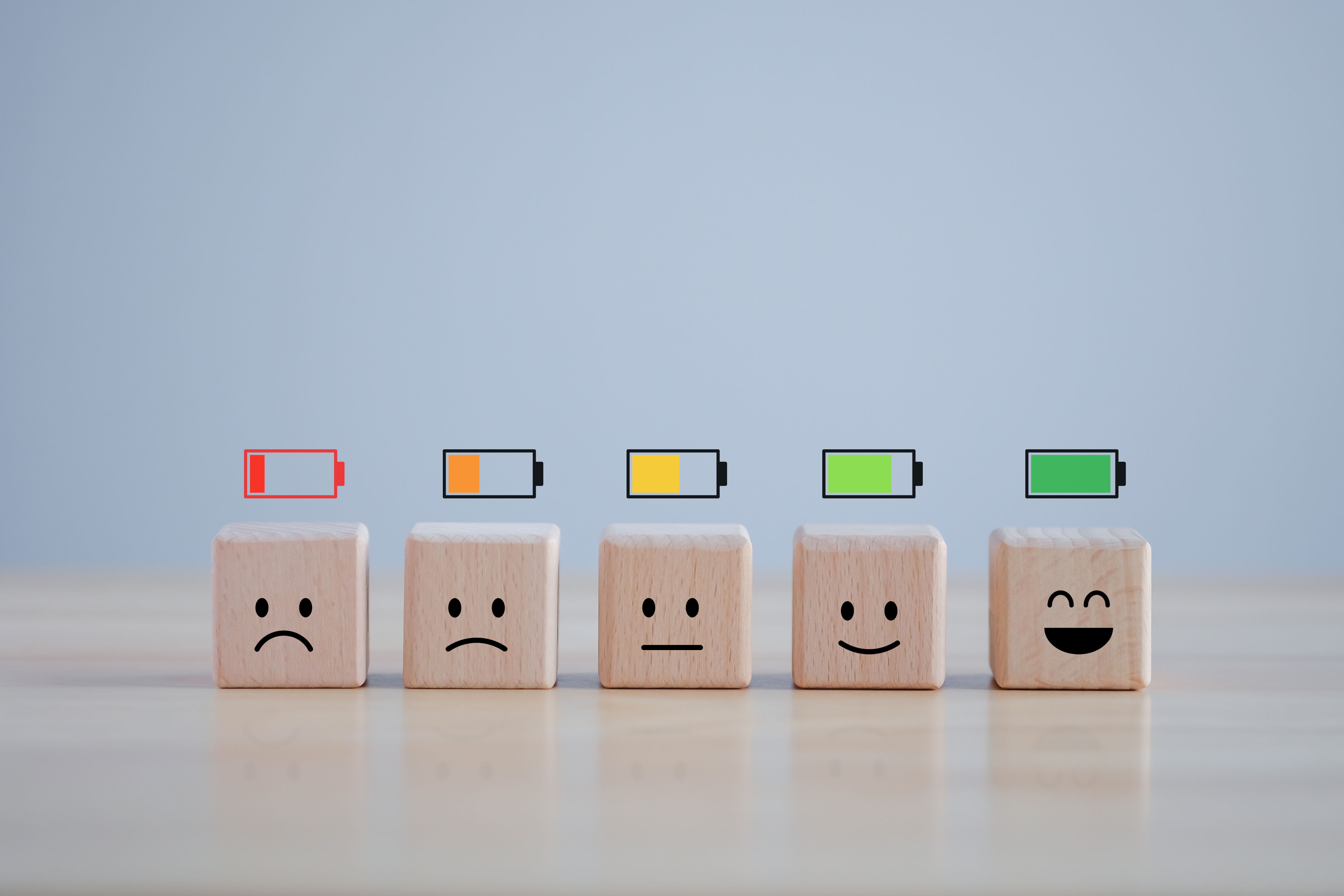Painting and Well-being: How Your Wall Color Can Improve Health

Key Highlights
- Understanding the psychology of color and its impact on well-being.
- Specific colors that improve mental and physical health.
- Practical tips for choosing and maintaining health-enhancing colors.
How Your Wall Color Can Improve Your Health
I remember a time when we decided to repaint our living room, initially as a simple refresh. We chose a soft blue, hoping for a calming effect. The transformation was incredible; not only did the room look brighter and more inviting, but we also noticed a significant improvement in our overall mood and well-being.
This experience underscored the powerful impact of color on our lives.Wall color isn't just about aesthetics; it can profoundly influence your mental and physical health. Lightmen Painting understands this connection and can help you select the perfect hues to create a healthy and harmonious environment in your home.
The Psychology of Color
Understanding Color Psychology
Color psychology explores how different hues affect human behavior and emotions. It's fascinating how our brains react to colors, triggering various emotional responses.
For instance,
blue is known for its calming effects, making it an excellent choice for bedrooms and spaces where relaxation is essential. On the other hand,
red is stimulating and energetic, often used in areas where activity and enthusiasm are desired.
Colors and Emotional Well-being
Choosing the right color can enhance your emotional well-being. Let's delve into some common colors and their psychological impacts:
- Yellow: This cheerful color is associated with happiness and optimism. It's perfect for kitchens and dining areas where a positive, energetic vibe is beneficial.
- Green: Known for its balancing and harmonizing properties, green brings a sense of peace and calm, making it ideal for living rooms and bedrooms.
- Blue: As mentioned, blue is calming and serene, reducing stress and anxiety. It's a great choice for any space where you want to promote relaxation.
- Red: While stimulating and exciting, red can also increase heart rate and adrenaline, making it suitable for areas like home gyms or dining rooms where you want to encourage activity and social interaction.
Colors That Improve Mental Health

Blue – The Calming Color
Blue is renowned for its calming effects, making it an ideal choice for spaces where you want to reduce stress and create tranquility. This color has the power to slow down the heart rate and lower blood pressure, promoting a sense of calmness and serenity.
I remember a particularly stressful period when my home office felt like a pressure cooker. Painting the walls a soft blue transformed the space into a peaceful oasis, making it much easier to focus and stay calm amidst tight deadlines.
Green – The Restorative Hue
Green is another excellent choice for promoting relaxation and reducing eye strain. It’s often associated with nature and brings a sense of balance and harmony into a room. Imagine stepping into a living room adorned with various shades of green—it feels like bringing a bit of the outdoors inside. Green can be especially beneficial in bedrooms, helping to create a restful and rejuvenating environment that supports good sleep and overall well-being.
Yellow – The Cheerful Shade
Yellow is the color of sunshine and happiness. It's known for its uplifting effects, capable of boosting mood and instilling a sense of joy and optimism. When we painted our kitchen yellow, the transformation was remarkable. The space felt more inviting and energetic, perfect for starting the day on a positive note. This cheerful shade is also great for playrooms, where it can stimulate creativity and playfulness in children.
Colors That Enhance Physical Well-being
Red – The Energizer
Red is a powerful color that can stimulate physical energy and increase appetite. This makes it an excellent choice for dining rooms, where you want to encourage lively conversations and a healthy appetite. The warm, inviting nature of red can turn a simple meal into a vibrant, shared experience. Just imagine a dining room with rich red walls, enhancing both the aesthetic appeal and the dining experience.
Purple – The Healing Touch
Purple is often associated with luxury and opulence, but it also has a soothing effect that can uplift spirits and promote mental balance. Incorporating purple accents into your home, whether through pillows, throws, or even a feature wall, can add a touch of elegance while fostering a relaxing atmosphere. Purple is particularly effective in spaces meant for relaxation and unwinding, such as bedrooms or meditation rooms.
White – The Clean Slate
White represents purity, cleanliness, and simplicity. It creates a sense of space and openness, which can be very calming and refreshing. Using white in bathrooms and kitchens can promote a hygienic environment, making these areas feel cleaner and more inviting. I’ve found that a crisp white kitchen not only looks sophisticated but also encourages cleanliness and order, which is crucial for areas where food is prepared.
Practical Tips for Implementing Color in Your Home
Start Small
If you're new to experimenting with color, start with small areas or accents. Painting a single wall or adding colorful accessories can give you a feel for how different hues affect your space without committing to a full room makeover. This approach allows you to build confidence and see the impact of color in a manageable way.
Test in Various Lighting
Colors can look drastically different under various lighting conditions. Be sure to test your chosen colors in natural daylight, evening light, and artificial lighting to ensure they create the desired effect at all times of the day. This step is crucial for achieving the perfect ambiance.
Balance Bold and Neutral
While bold colors can make a significant impact, balancing them with neutral tones ensures the space doesn't become overwhelming. Using bold colors as accents against a neutral backdrop can create a harmonious and visually appealing environment.
In Our Experience:
"Choosing the right wall colors has proven transformative for our clients' health and overall quality of life. We once helped a client who suffered from insomnia by redesigning their bedroom palette with soothing blues and greens, resulting in improved sleep quality and reduced anxiety. This project was a testament to the power of color in creating a restorative haven, emphasizing our belief that the right environment can significantly enhance well-being."
Practical Tips for Choosing Health-Enhancing Colors
Consider the Room's Purpose
When selecting colors for your home, it’s essential to consider the room's purpose. The right color can enhance the functionality and atmosphere of a space. For instance, soft blues are ideal for bedrooms as they promote relaxation and tranquility, aiding in a restful night's sleep.
On the other hand, vibrant yellows are perfect for kitchens, stimulating appetite and creating an energetic and cheerful environment. Understanding how colors can influence mood and activity levels helps in choosing the most appropriate shades for each room.
Lighting Matters
Lighting plays a crucial role in how colors appear in your home. Both natural and artificial light can significantly affect color perception. I remember choosing a beautiful shade of green for my living room, only to find it looked completely different in the evening under artificial light.
It’s always a good idea to test paint samples on your walls and observe them at different times of the day. This approach helps ensure that you’ll be happy with the color in all lighting conditions.
Start Small
Starting small can prevent costly and time-consuming mistakes. Before committing to a full room, try painting a small area or use sample swatches to see how colors look throughout the day. I often recommend painting a large piece of cardboard and moving it around the room to observe how the color changes with light and shadows. This simple step can provide valuable insight into how a color will truly feel in your space.

Maintenance and Longevity of Health-Enhancing Colors
Choosing the right colors for your home can significantly impact your mental and physical well-being, but maintaining these colors is equally important to ensure they continue to enhance your environment. Here are some practical tips on how to keep your walls looking vibrant and beneficial for your health.
Regular Cleaning and Upkeep
Maintaining the vibrancy of your wall colors requires regular cleaning and upkeep. Dust, dirt, and grime can dull the appearance of your walls, diminishing their health benefits and aesthetic appeal.
How to Clean Painted Walls
To clean painted walls without damaging the finish, use a soft cloth or sponge with mild soap and water. Avoid abrasive cleaners or scrubbers that can scratch or wear down the paint. Here’s a personal tip: I’ve found that using a microfiber cloth works wonders in picking up dust without leaving streaks or residues.
- Dust Regularly: Use a duster or a vacuum with a brush attachment to remove dust from walls.
- Spot Clean: For small marks or stains, gently clean the area with a damp cloth and mild soap. Rinse with clean water and dry with a soft cloth.
- Deep Clean Annually: At least once a year, give your walls a thorough cleaning to remove any buildup of dust and dirt. This can help maintain the color’s vibrancy and ensure your home remains a healthy environment.
Periodic Repainting
Even with the best maintenance practices, painted walls will eventually show signs of wear and tear. Periodic repainting not only refreshes the appearance of your home but also ensures the continued health benefits of your chosen colors.
Benefits of Refreshing Paint
Repainting your walls periodically can revitalize your living space and maintain a healthy environment. Here’s why:
- Renewed Aesthetic Appeal: Fresh paint can instantly brighten a room, making it feel more welcoming and vibrant.
- Enhanced Health Benefits: Over time, paint can fade or discolor, reducing its psychological and physical benefits. Refreshing the paint ensures you continue to enjoy the full impact of your health-enhancing colors.
- Increased Durability: New paint adds a protective layer to your walls, helping them withstand everyday wear and tear more effectively.
We offer professional repainting services to keep your home looking fresh and vibrant. Our team uses high-quality, eco-friendly paints that are safe for your health and the environment.
Maintaining the longevity and health benefits of your wall colors requires regular cleaning and periodic repainting. By following these simple upkeep practices, you can ensure that your home remains a vibrant, healthy sanctuary for years to come.
Action
Ready to refresh your home with health-enhancing colors? Contact Lightmen Painting today for expert advice and professional painting services. Let us help you create a healthier and more beautiful living environment.
Choosing and maintaining the right wall colors can transform your home and enhance your well-being. With the right techniques and products, you can enjoy a vibrant and healthy living space that truly reflects your style and promotes your health. Don’t underestimate the power of a fresh coat of paint in improving your home’s atmosphere and your overall quality of life.
Do You Have Questions? Give Us A Call With Any & All! 503-389-5758
-
People Also Ask:
How can wall colors impact my health?
Wall colors can significantly affect both mental and physical health by influencing mood, stress levels, and even sleep quality. Different colors have varying psychological effects; for example, blue can promote relaxation while yellow may increase energy and happiness.
What are the best wall colors for promoting relaxation?
Blue and green are excellent choices for promoting relaxation and calmness. These colors are often associated with nature, which can help reduce stress and anxiety, making them ideal for bedrooms and living areas where relaxation is a priority.
Can the color of my walls really affect my physical health?
Yes, the color of your walls can affect your physical health. For instance, lighter colors can help brighten a room and boost your mood, while darker colors might make a space feel smaller and more confining, potentially impacting your mental health.
-
SUBSCRIBE TO OUR BLOG: Stay informed with the latest in Painting and DIY projects by subscribing to Lightmen Painting. Get insights, tips, and more delivered straight to your inbox. We would also love to know what you would like to read about, leave thoughts on where we should go next. Interests, Topics, Ideas, all are welcome.
If your in the Portland, Or. area and need advice or a free no obligation estimate call us at 503-389-5758 or email scheduling@lightmenpainting.com
Local Shout Out:
Celebrating Xpareto: Innovators in Data Analytics and Business Solutions
From the team at Lightmen Painting, we extend our highest praise to Xpareto for their exceptional work in data analytics and business solutions. Just as we strive for excellence and precision in our painting services, Xpareto excels in providing cutting-edge analytics and insights that drive business growth and efficiency. Their commitment to innovation and client success aligns perfectly with our mission to enhance and beautify environments with professional painting solutions.
Thanks for stopping by Lightmen Daily! Stay tuned for more practical tips and expert advice on making your painting projects flawless, from wall to floor!
Definitions
- Color Psychology: The study of how colors affect human behavior and mood.
- Emotional Well-being: A state where a person can realize their abilities, cope with normal stresses of life, work productively, and contribute to their community.
- Mental Health: Psychological state of someone who is functioning at a satisfactory level of emotional and behavioral adjustment.
- Physical Health: Refers to the physical state being free from illness or injury.
- Aesthetic Appeal: The beautiful or pleasing appearance of something.
- Ergonomics: The study of people's efficiency in their working environment.
- Ambiance: The character and atmosphere of a place.
- VOC (Volatile Organic Compounds): Organic chemicals that have high vapor pressures and can affect environmental and personal health.
- Tranquility: The quality or state of being tranquil; calm.
- Harmony: The combination of different parts to create a pleasing and consistent whole.
Lightmen Painting Serving: Portland, Tigard, Lake Oswego, Tualatin, West Linn, Milwaukie, Sherwood, Happy Valley, Oregon City, Beaverton, Hillsboro, Gresham -Trade Partners-

